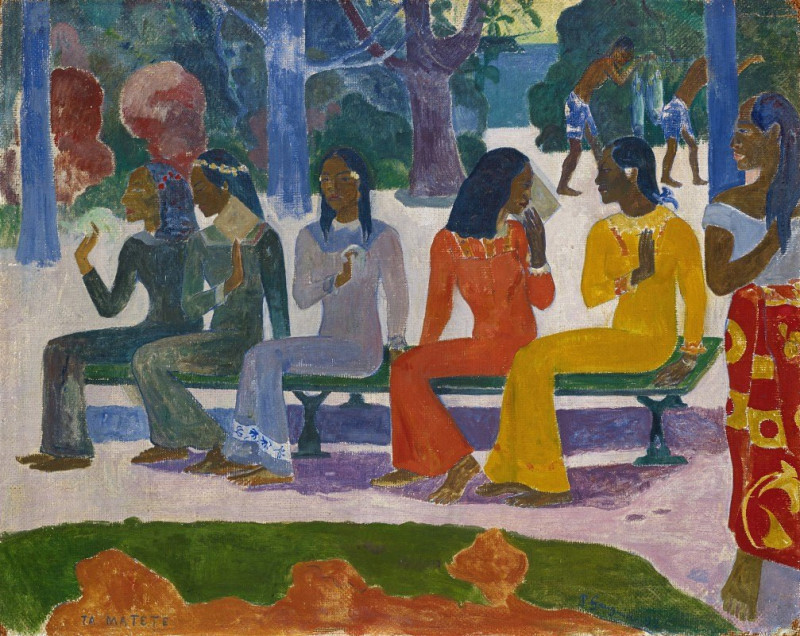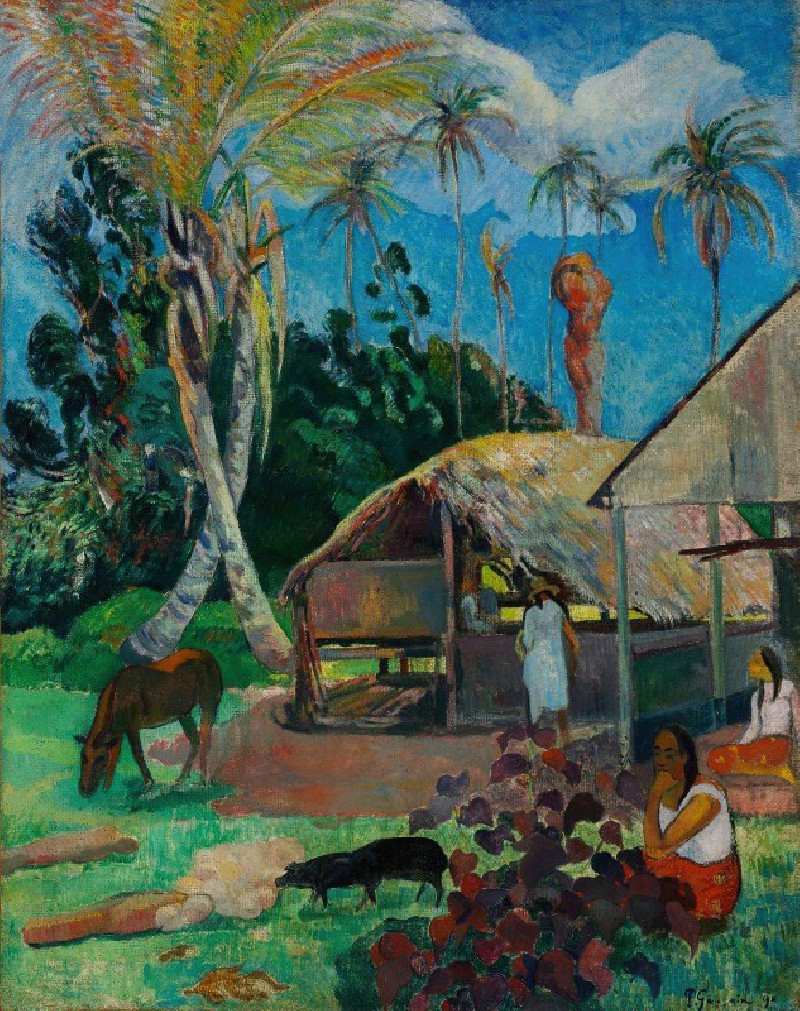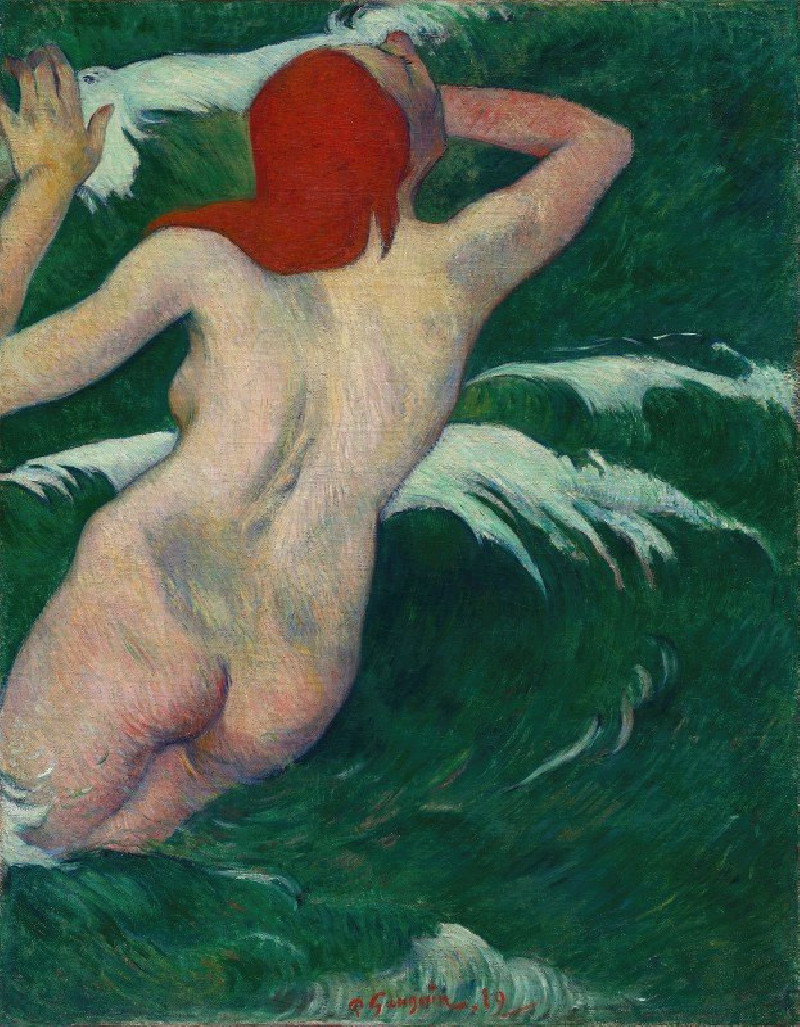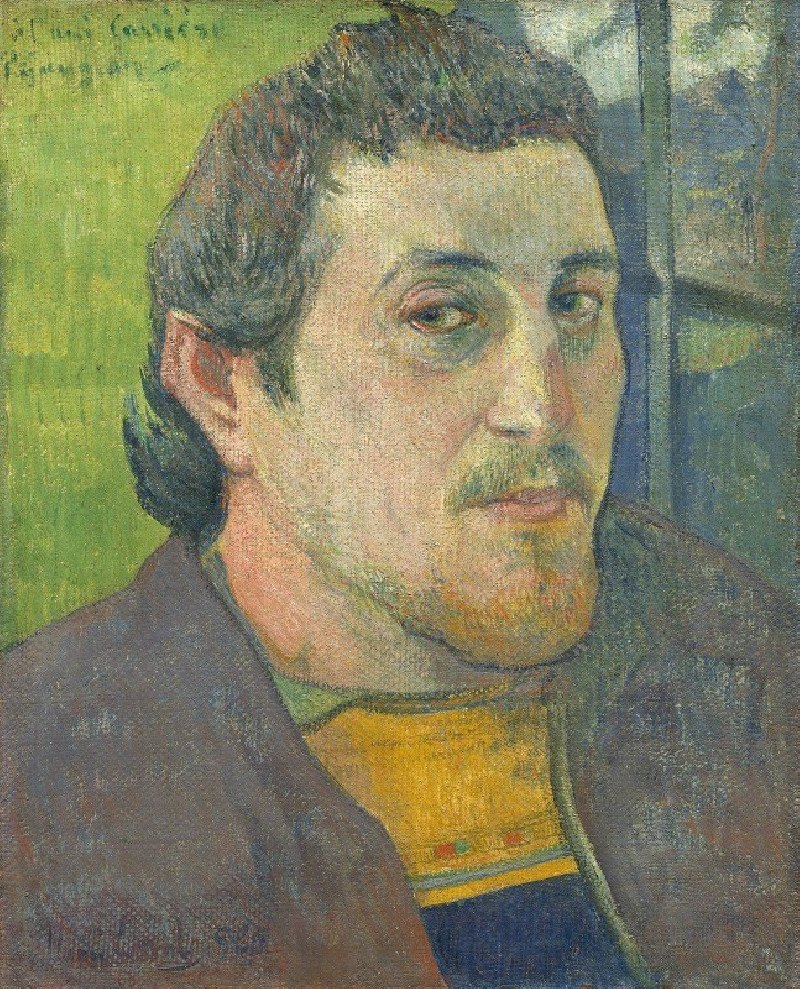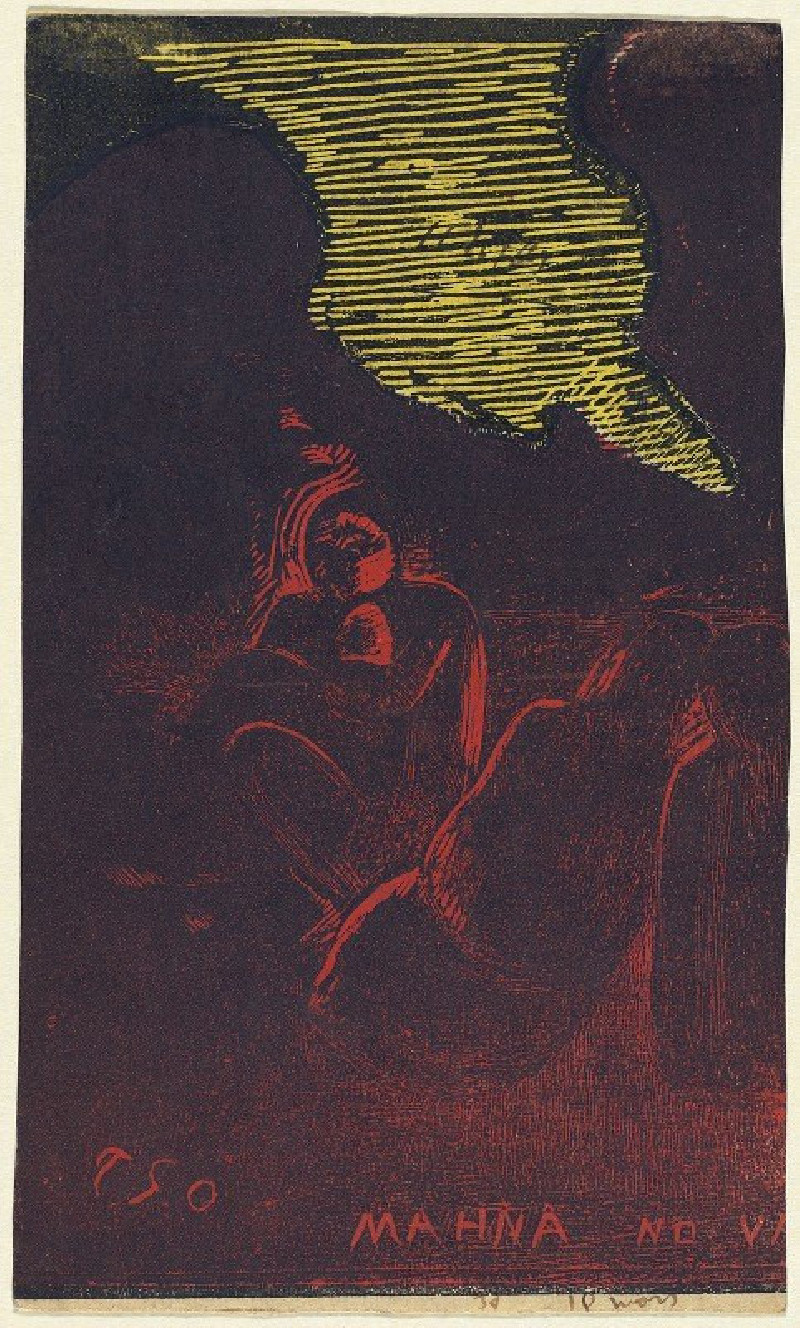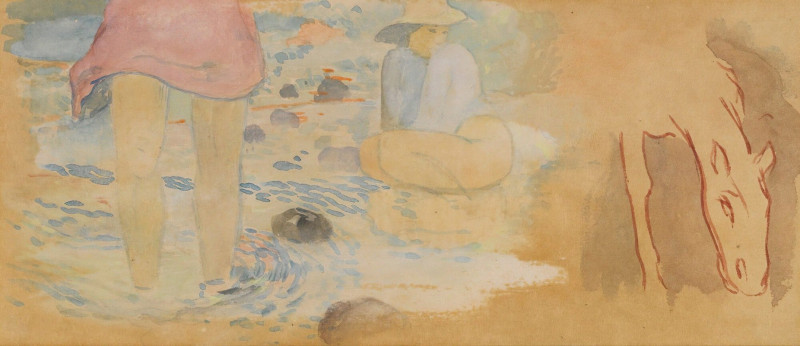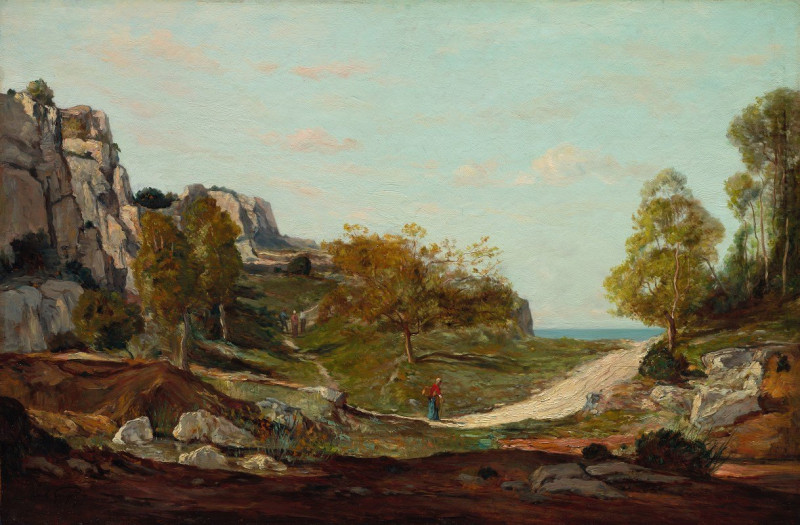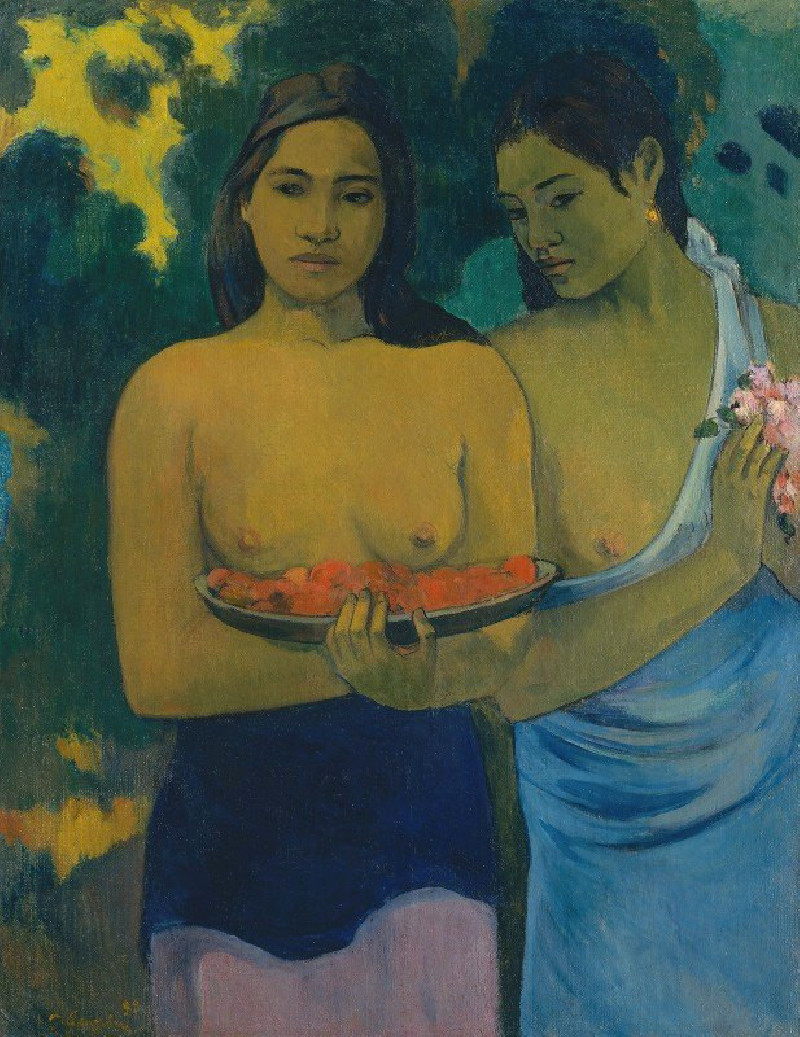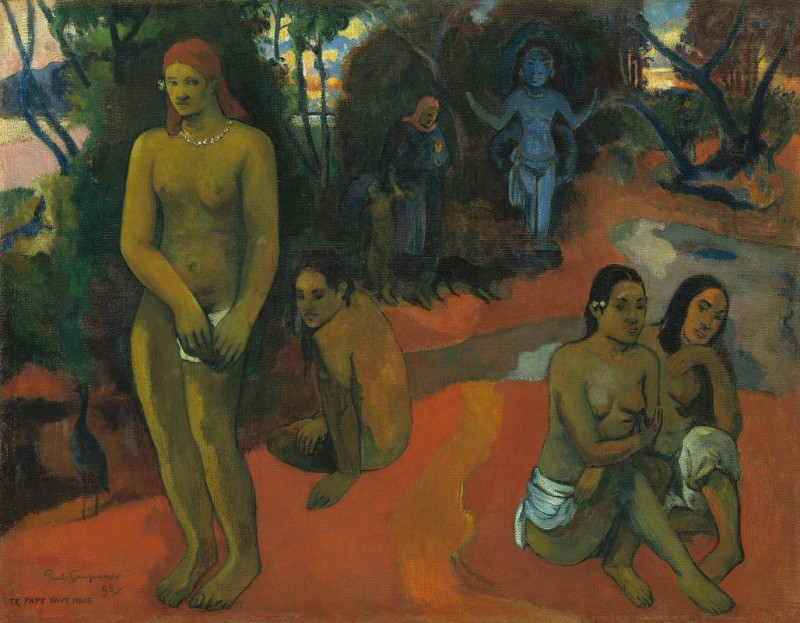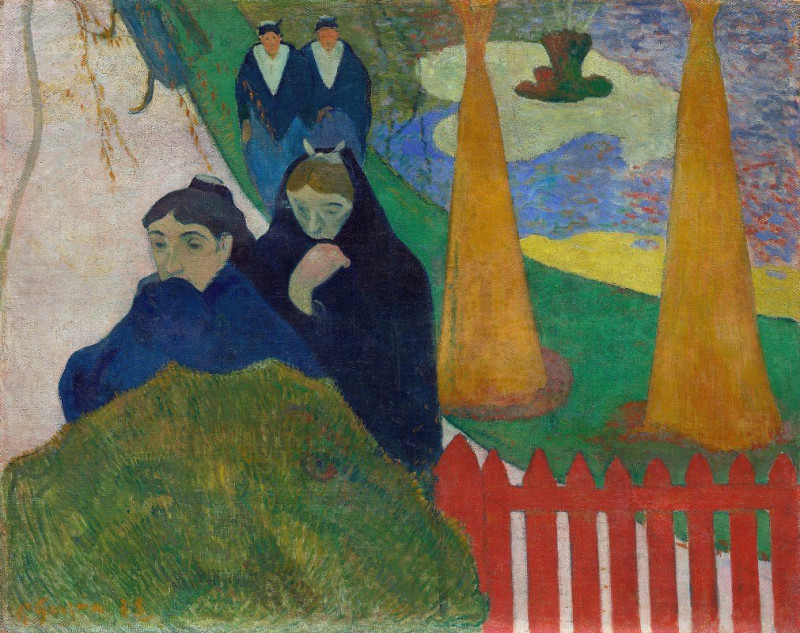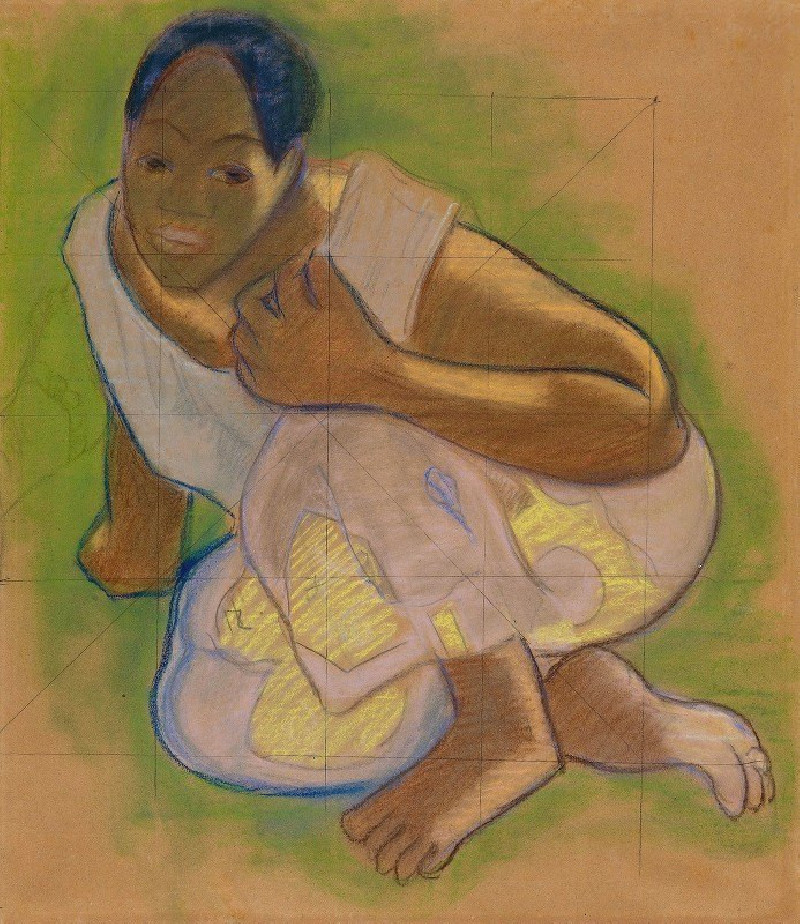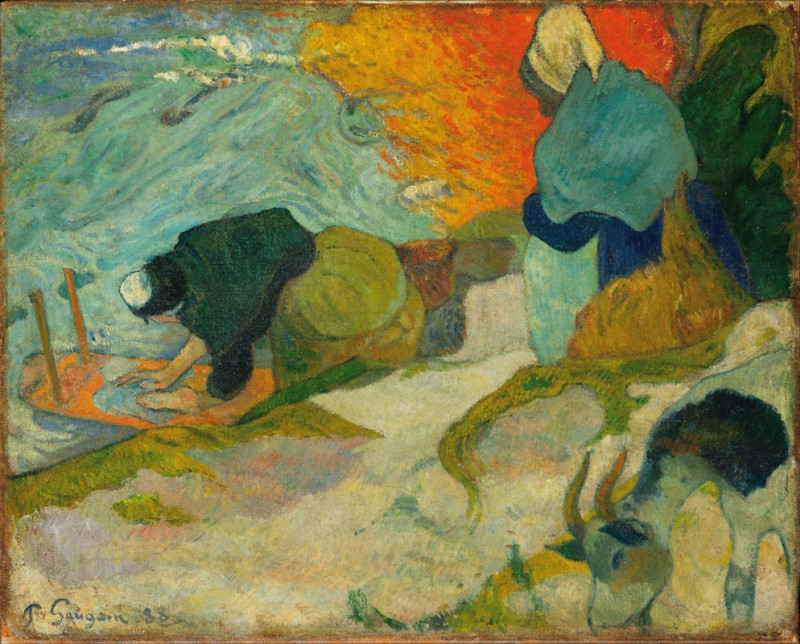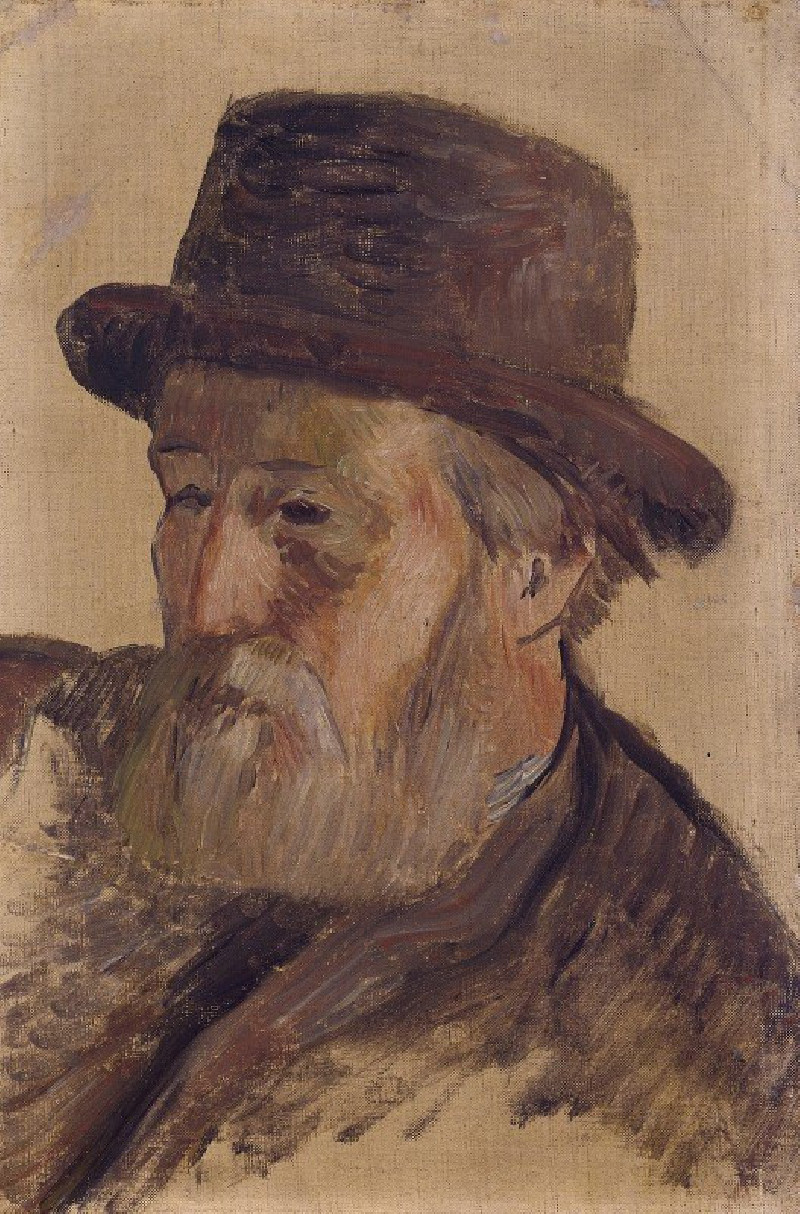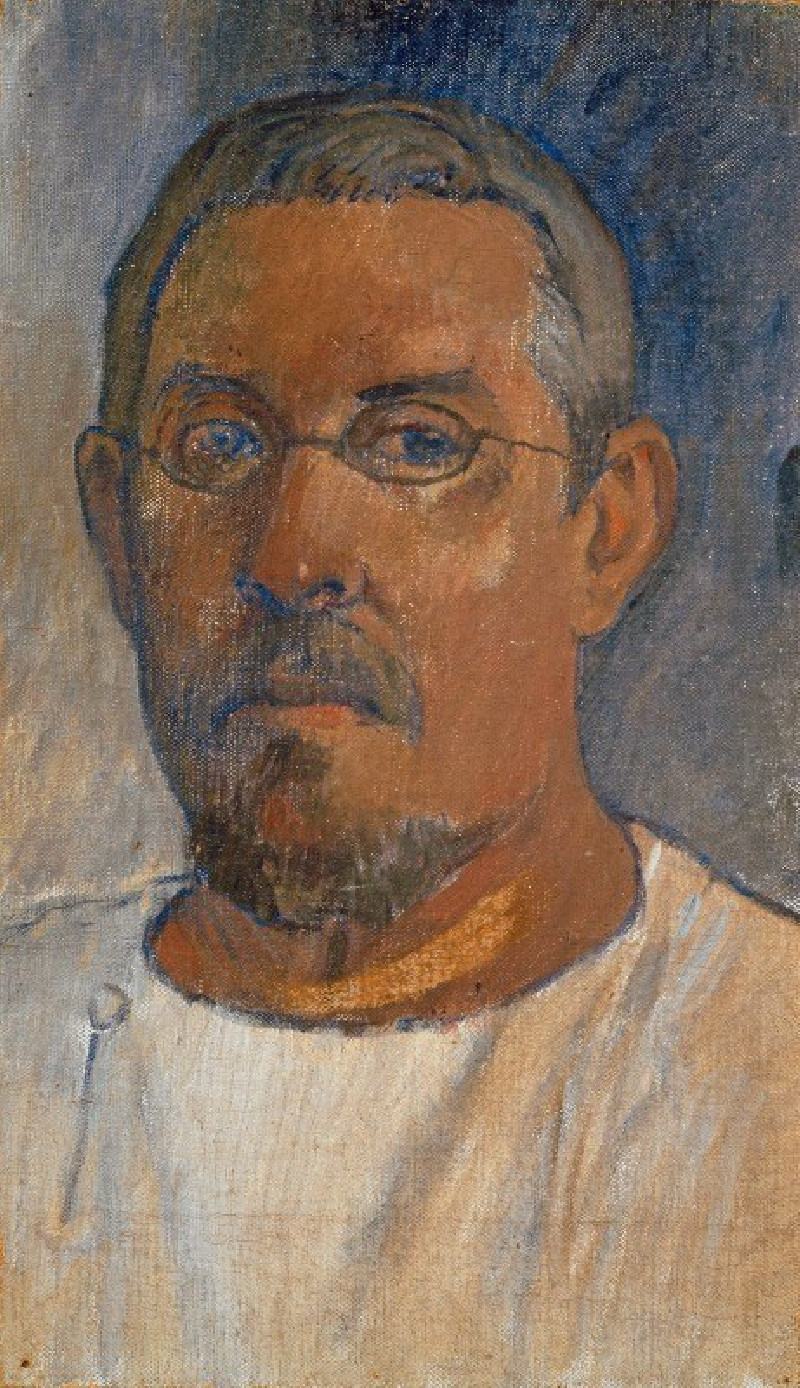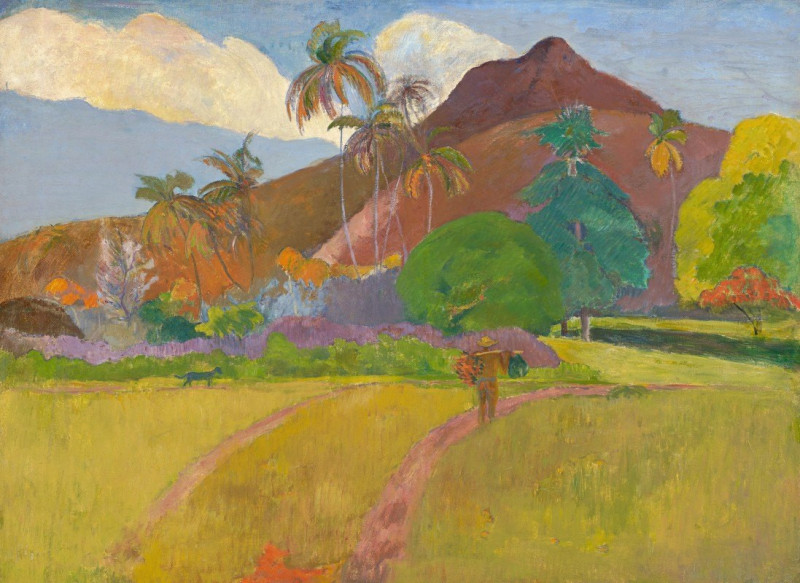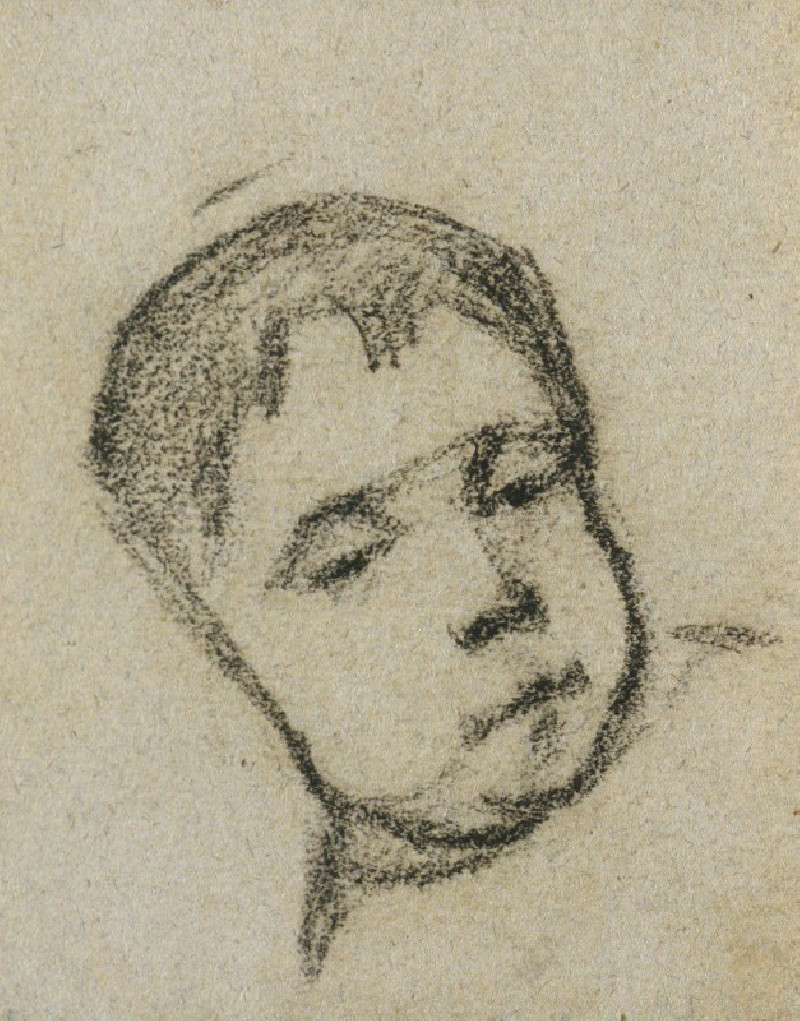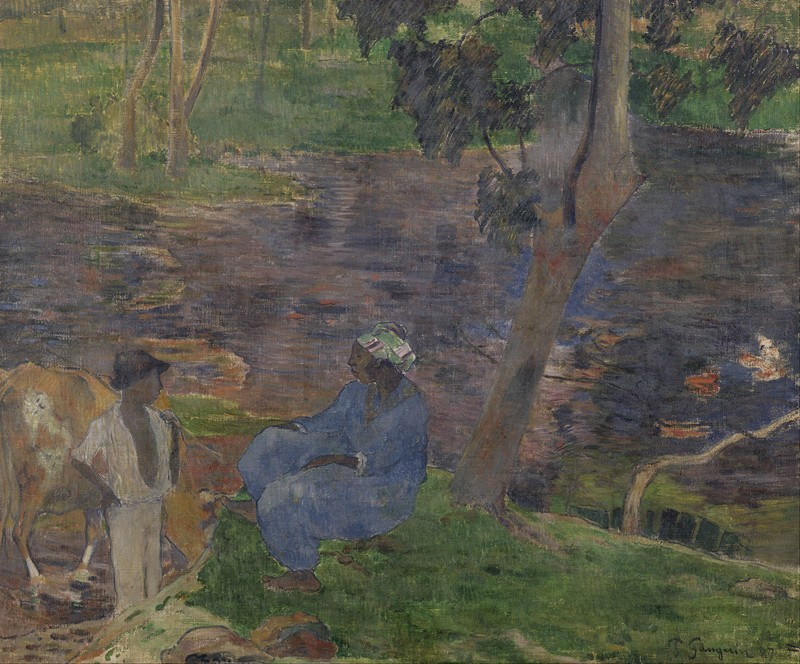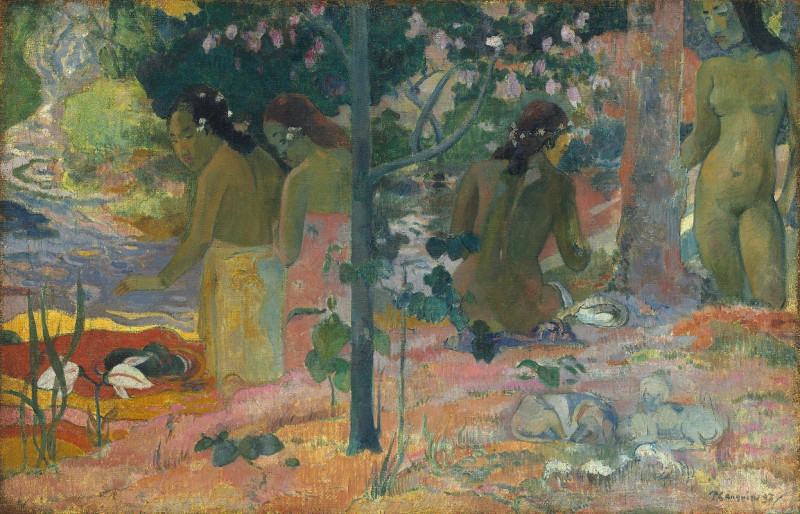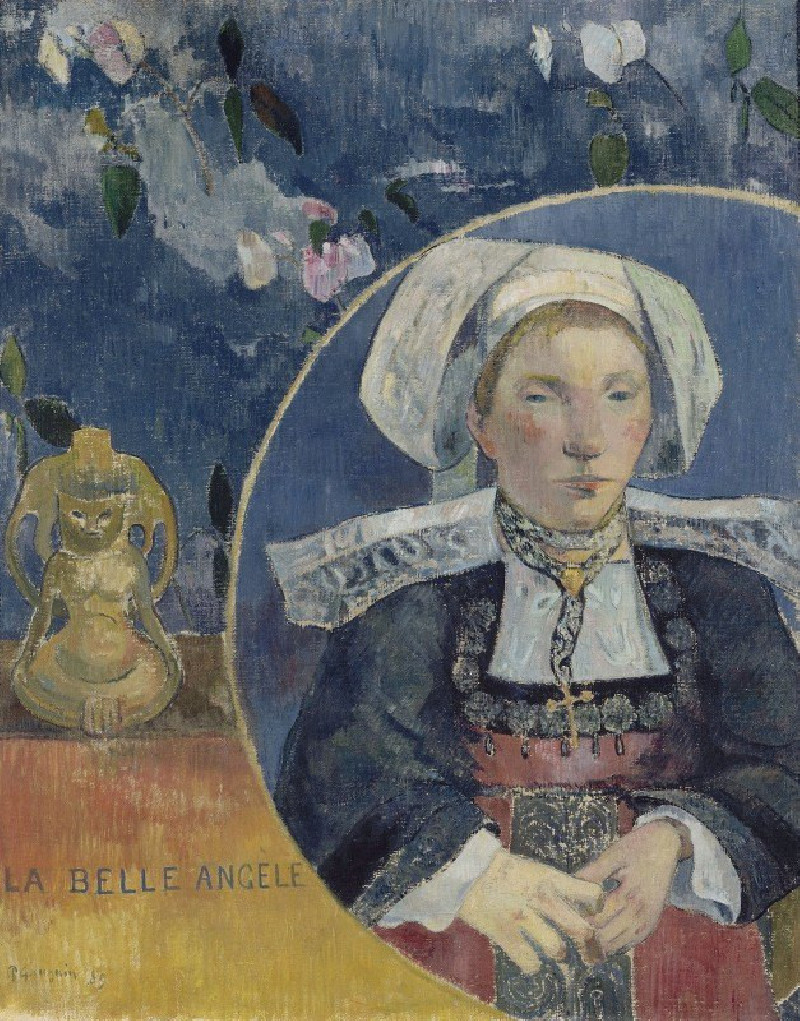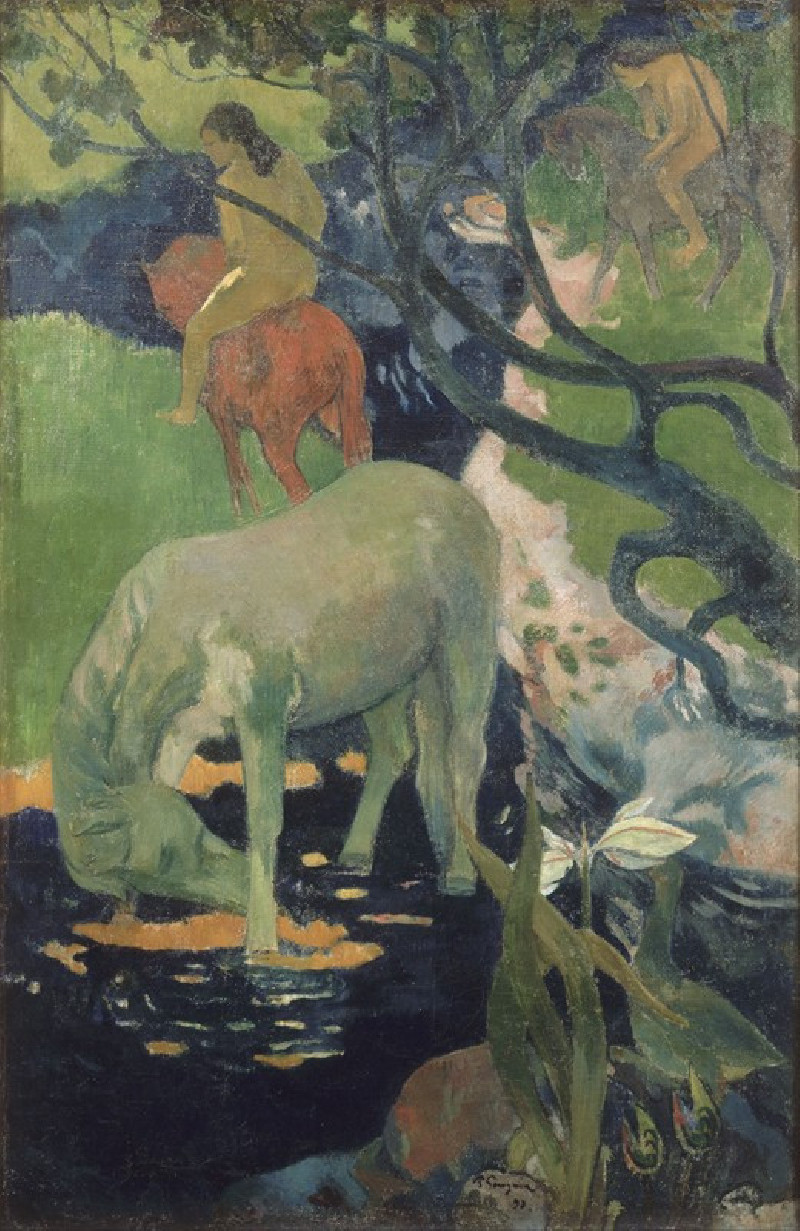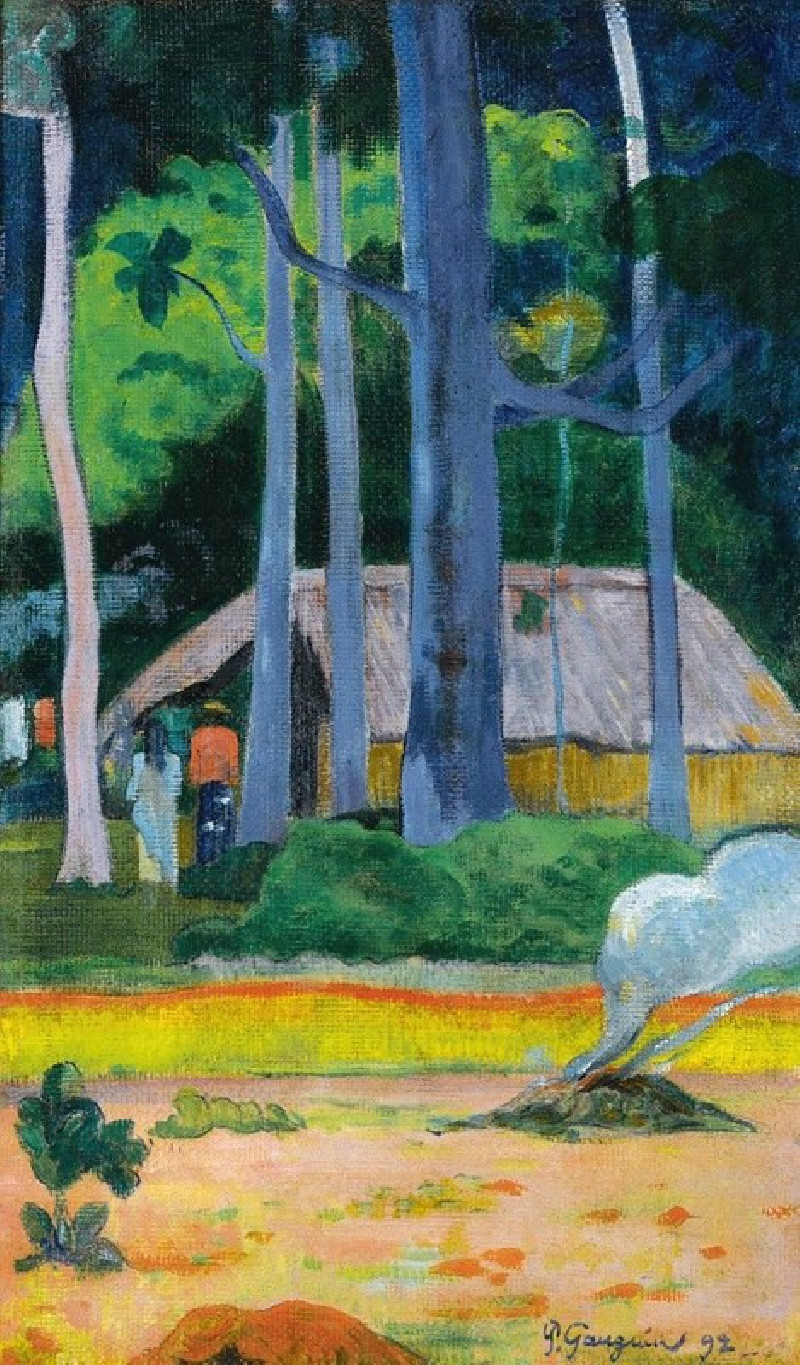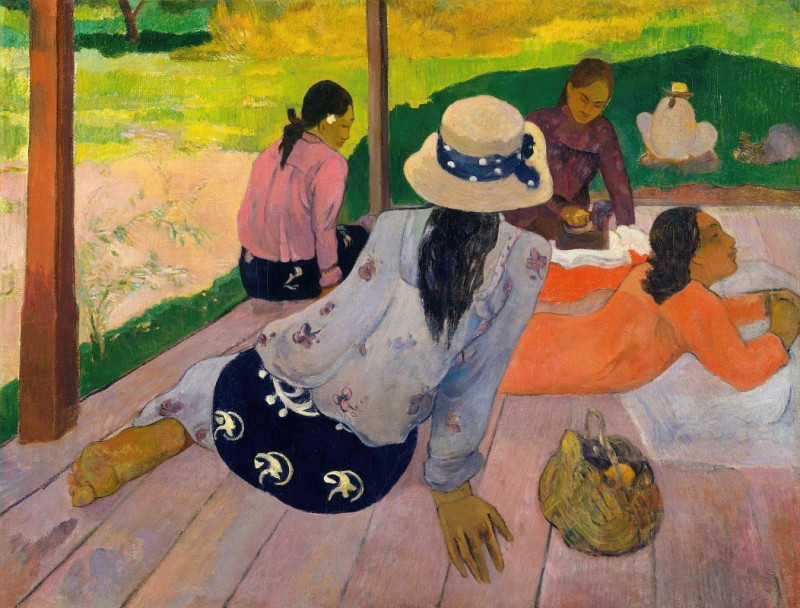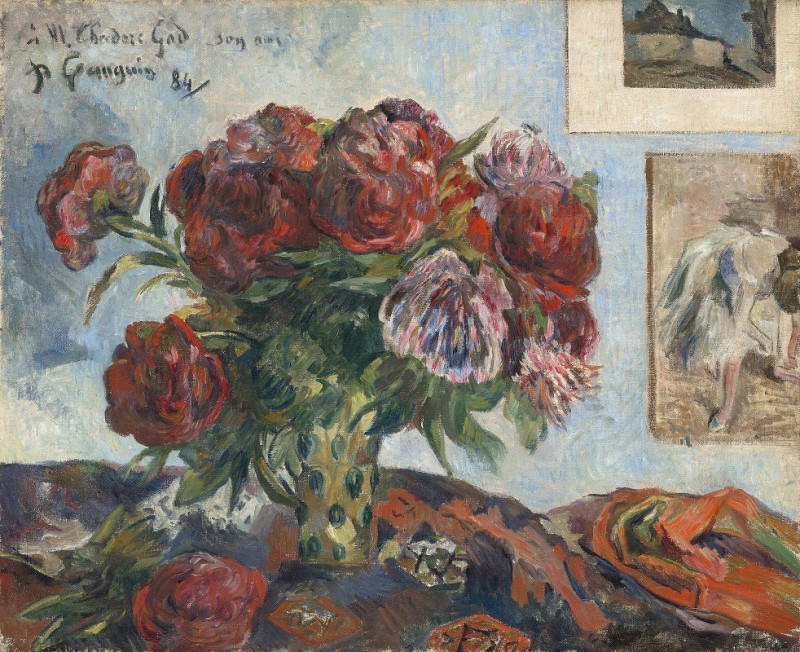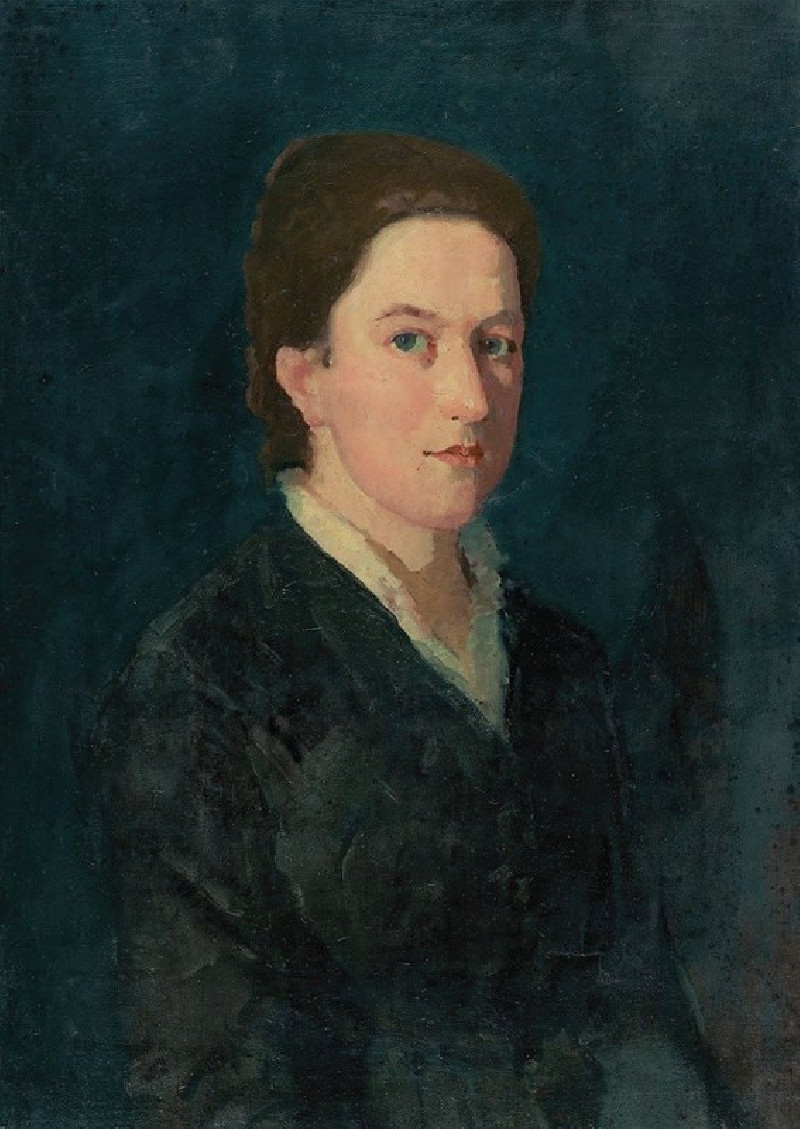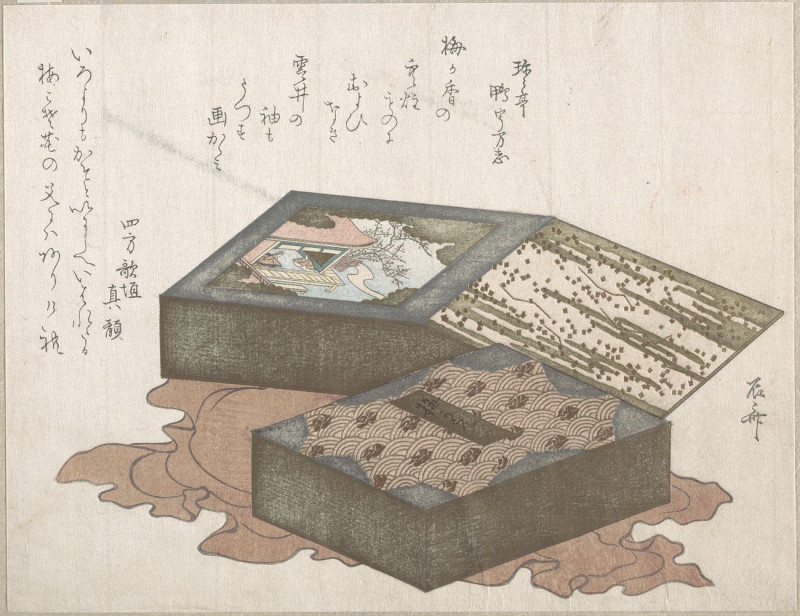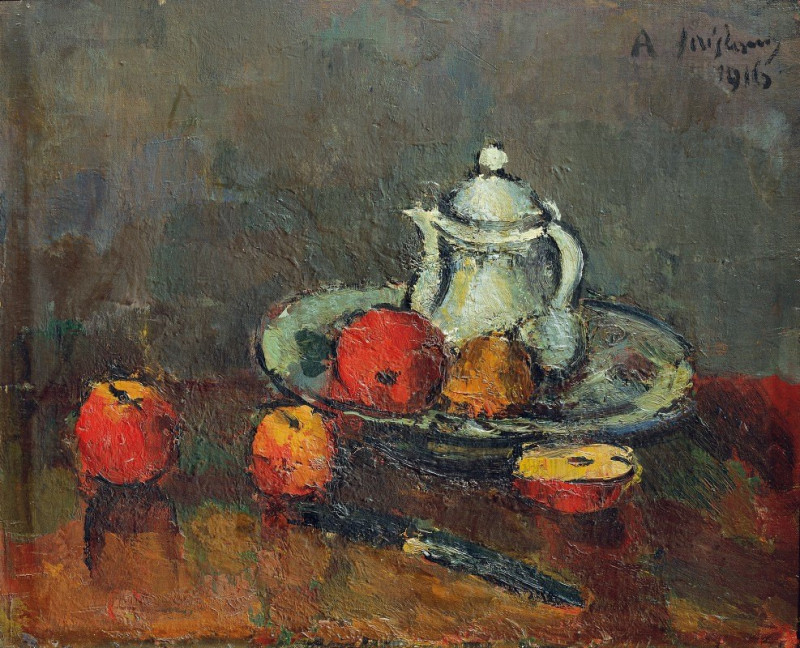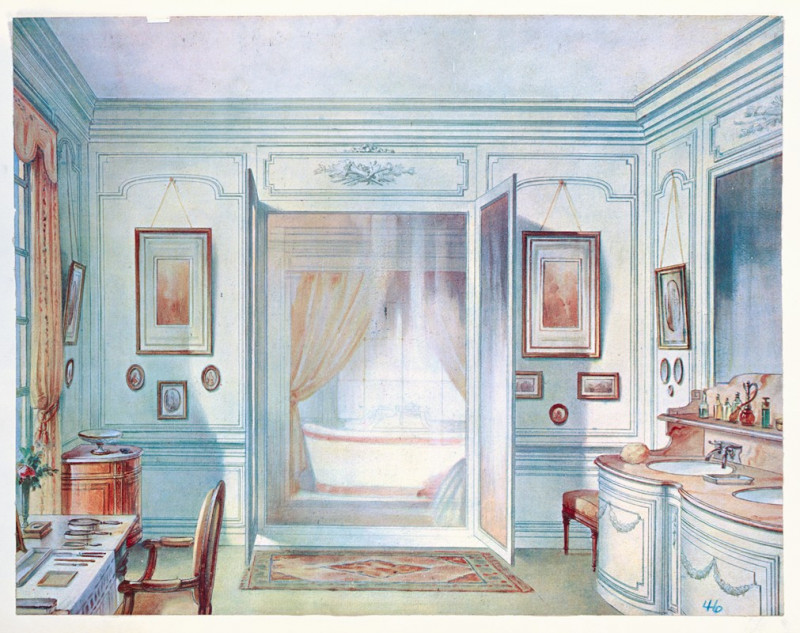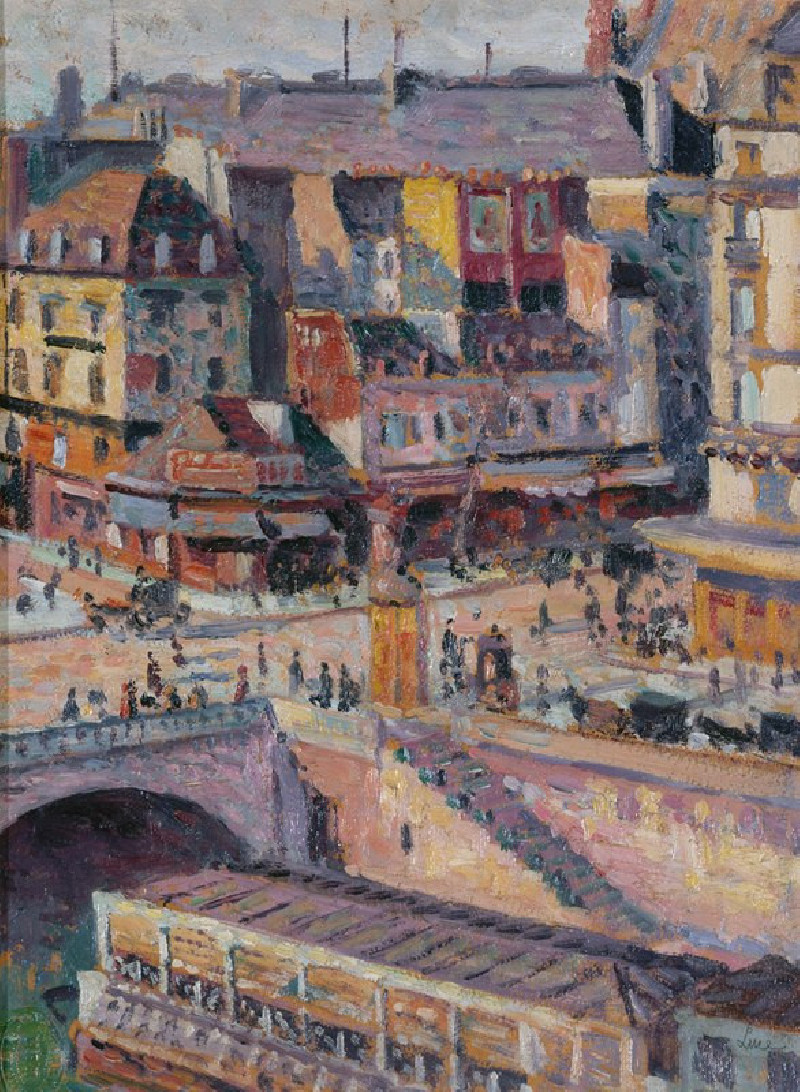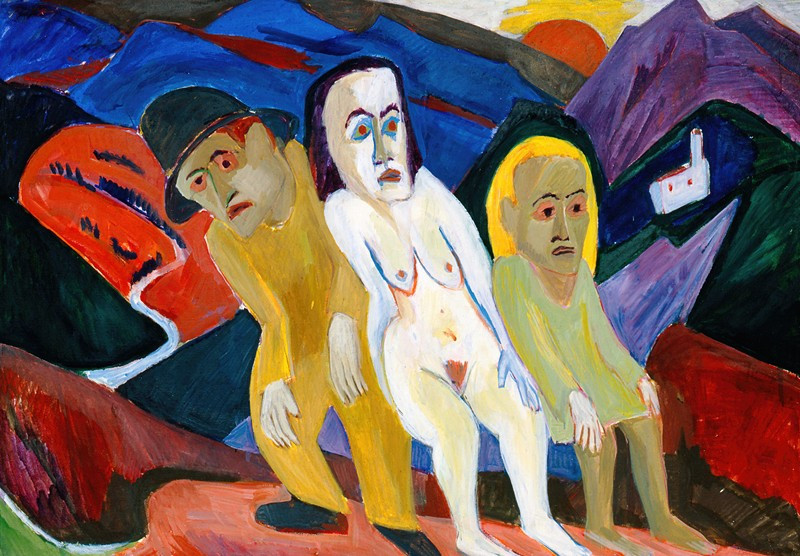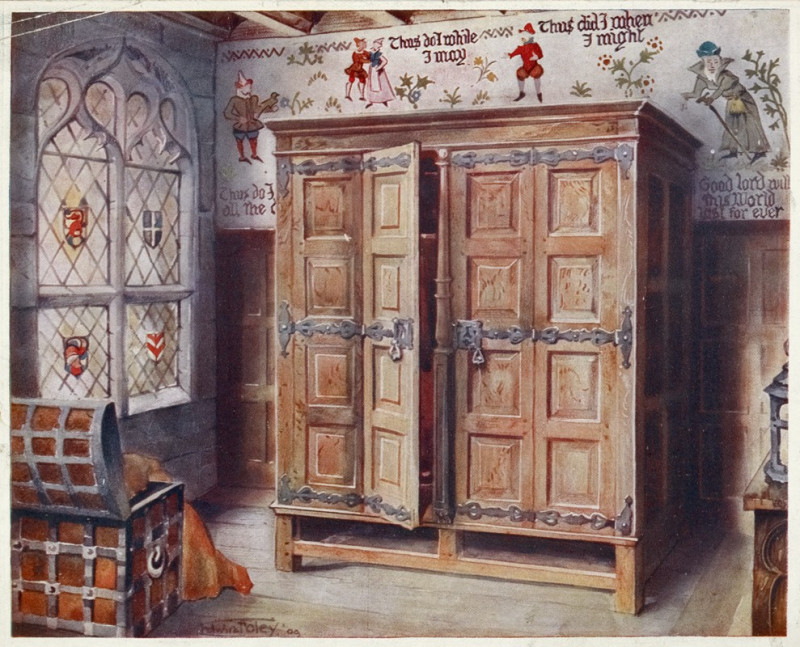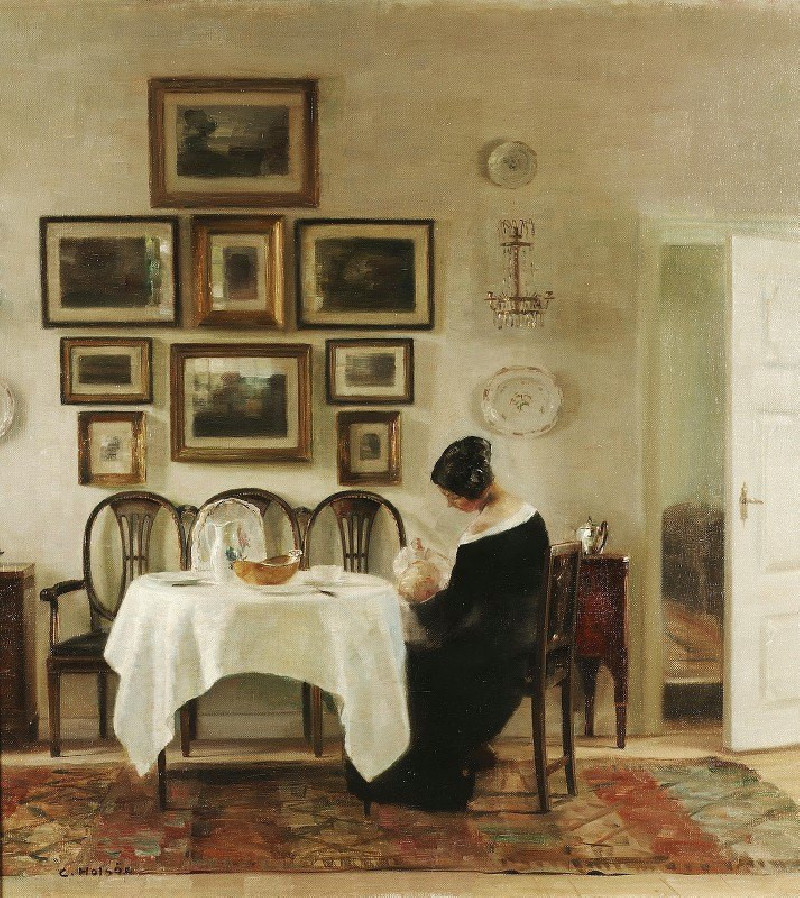Ta matete (The Market) (1892)
Technique: Giclée quality print
Recommended by our customers
More about this artwork
"Ta Matete" (1892) by Paul Gauguin offers a vibrant glimpse into market life on the islands of the South Pacific, where Gauguin spent much of his later years. This painting captures the serene yet lively atmosphere of a public space, where local individuals gather, engage, and interact within a lush landscape.The composition presents a series of seated figures, predominantly women, draped in colorful traditional garments. These figures are depicted in various poses, some conversing, while others are lost in individual contemplation. The diversity in dress and posture hints at the individual identities and stories within this communal setting. The hues of their clothing, ranging from deep blues and greens to bright yellows and reds, convey a sense of vibrant, living culture, pulsating with energy and color.In the background, amidst vividly painted greenery, subtle scenes of other locals bending and interacting suggest the broader activity of the market, though the primary focus remains on the group in the foreground. Gauguin’s use of bold, flat colors and simplified forms reflects his departure from European artistic conventions and his embrace of the symbolism and style that he encountered in his Tahitian surroundings. This approach not only emphasizes the form and color more dramatically but also evokes a sense of timeless calm amid daily activities."Ta Matete" is more than a mere depiction of a market scene; it is an encapsulation of Gauguin's interpretation of Tahitian culture—idealized, vibrant, and full of life, standing in contrast to the industrialized Europe of his time.
Delivery
Returns
Eugène Henri Paul Gauguin was a French Post-Impressionist artist. Unappreciated until after his death, Gauguin is now recognized for his experimental use of color and Synthetist style that were distinct from Impressionism. Toward the end of his life, he spent ten years in French Polynesia. The paintings from this time depict people or landscapes from that region.

